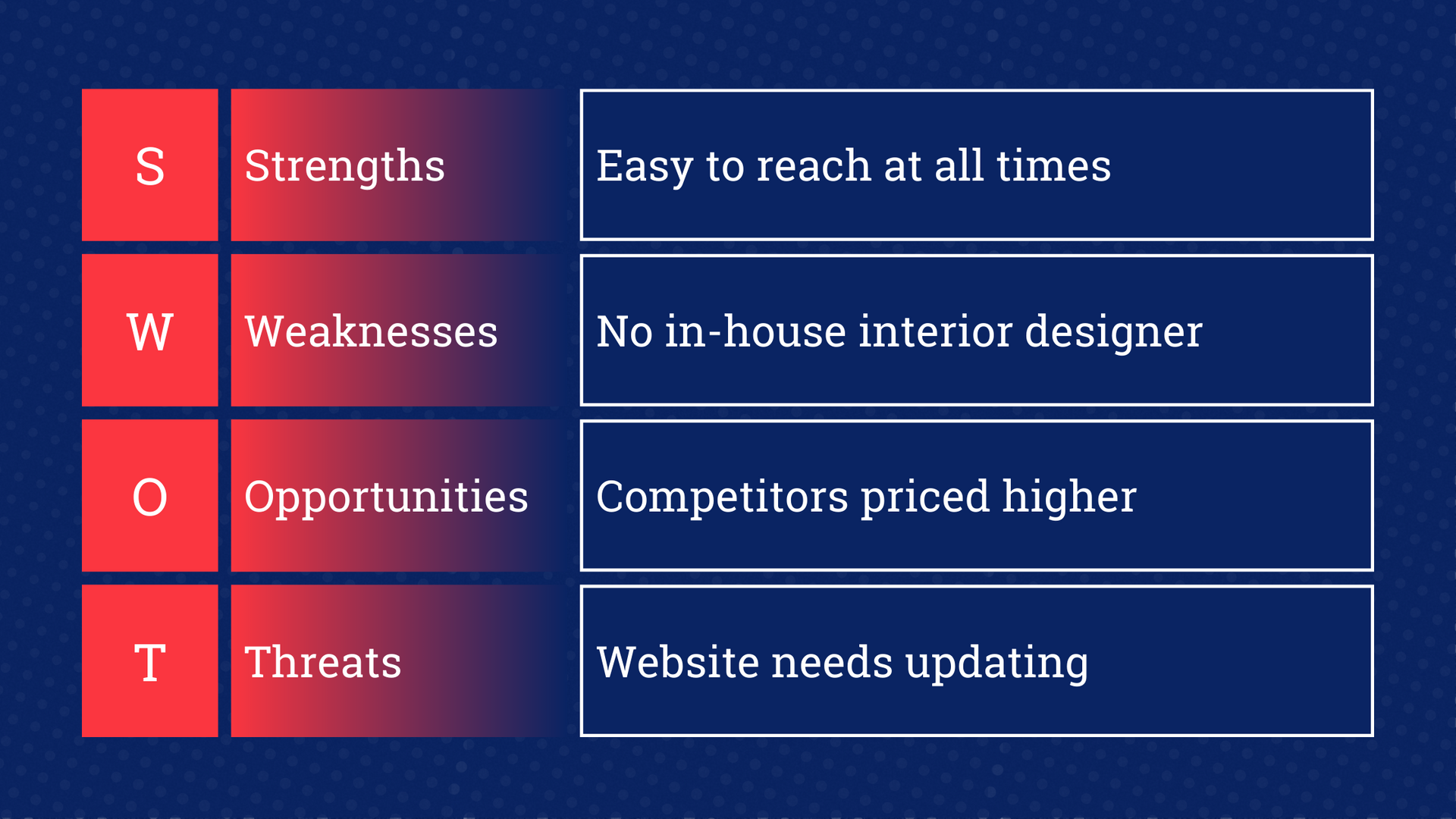How To Create A Winning Architectural Firm Marketing Plan
Let’s be honest, you already know that having a well-thought-out marketing plan for your architecture firm is essential for success.
You know that a sound marketing plan can reduce the feast and famine syndrome — not having time to find work until the work runs out — by helping you build a pipeline of potential customers.
But there is one problem.
You’re an architect — marketing is not part of the standard design school curriculum.
So where do you start?
It turns out that you are exactly where you need to be.
In this article, you will find a comprehensive guide to creating a successful architecture marketing plan for your firm.
This plan will ensure you are reaching the right audiences with effective marketing strategies - all while staying within budget. Keep reading to learn:
- The Benefits of Marketing for Architects
- How to Create Your Marketing Plan in 9 Easy Steps
- When to Ask for Professional Help
The Benefits of Having an Architecture Firm Marketing Plan
A well-crafted architecture marketing plan can help your firm set goals, determine your target audience, and determine when to work with outside marketing experts. But what tangible benefits does creating a solid marketing plan bring to architecture firms? Here are 3 of the top benefits you can expect with a marketing plan in place.
1. Better marketing results

According to Quickbooks, firms grow 30% faster when you have a strategic plan. Additionally, a Coschedule study found that people who are organized when it comes to marketing are 674% more likely to be successful.
2. Increased Visibility
A comprehensive digital marketing plan will help your architectural firm gain greater visibility in your market. This includes blogging, social media, Google Business Profile, Houzz, and other online channels.
3. Less reliance on referrals
If you rely too much on word of mouth and referrals, you may be missing out on potential customers who are seeking help online. Having strong marketing strategies in place will help you generate high-quality leads from other channels.
How to Create Your Marketing Plan in 9 Easy Steps
For some architecture firms, digital marketing strategies can be daunting. There are many factors to consider when making your plan, such as your goals, your target audience, your size, and your resources.
But developing an architecture marketing plan is well worth the effort. Get it right, and you’ll avoid wasting money and time - giving you more return for your investment.
Now, let’s get to the 9 steps to creating your marketing plan.
Step 1: Start With The Basics

When creating a successful marketing strategy, preparation is vital. That’s why, before diving in, it’s important that you:
- Know who you are trying to attract, your target audience(s)
- Research your competitors in the market
- Understand your position in the market
Let’s dig into those three topics a bit more.
1. Know who you are trying to attract
Knowing who your ideal clients are will help you determine which strategies and tactics are going to be most effective in reaching them. Tailoring your marketing tools and messaging correctly is critical in ensuring your marketing dollars are not wasted.
For example, if you are targeting Millennials as potential clients, then social media campaigns would likely be more effective since they are online more than other age groups.
2. Research your competitors
Competitor analysis allows you to understand how your competitors are doing in the market and what they are doing to attract potential clients.
This allows you to identify gaps in their marketing. For example, a competitor who has a good website but no easy way to schedule an initial meeting.
3. Understand your position in the market
A SWOT analysis is a helpful way to understand your positioning in the market. Using SWOT analysis (strengths, weaknesses, opportunities, threats) can help you identify areas where you need improvement or where you could benefit from additional resources.
Here is an example:

S - Easy to reach at all times
W - No in-house interior designer
O - Competitors priced higher
T - Website needs updating
Step 2: Determine Your Marketing Budget
With the basics covered, the next important step is to determine your marketing budget.
On average, in the US, small businesses spend 3-5% of their gross revenue on marketing.
However, this number can vary widely, depending on the stage of your business and your goals for marketing.
For example, if you are looking to expand into a new sector, or open a new office in a new location, you could spend as much as 20%.
For businesses of less than $5 million in revenue, 7-10% is a good target. That can accommodate a healthy marketing plan that includes:
- Marketing
- Website
- Blogs
- Social media
- Email marketing
- Marketing automation
- Costs of promoting your business:
- Local Networking
- Public Relations
- Industry Events
- Industry Associations
To set an appropriate budget for your architecture firm’s marketing, make sure you take into account both revenue and expenses. This will help inform your overall budget's range and the specific strategies or tactics that are feasible within your budget.
You should also factor in any additional resources or services you may need. This may include graphic designers, social media managers, copywriters, or an external architecture marketing firm.
At Archmark, our done-for-you marketing strategy includes everything you need in one convenient monthly payment. To find out if our program is right for you, CLICK HERE to apply for your free Clarity Call today.
Step 3: Set Marketing Goals

Setting specific marketing goals will help guide your decisions on how to create a budget plan that aligns with what you want to achieve (e.g., increasing brand awareness or firm visibility).
For example, suppose your goal is to increase leads from your website for larger, higher paying projects by the end of the year. In that case, you’ll know that a significant portion of marketing budget will go towards improving your website and lead generation funnel.
The more defined you can be about your architecture marketing goals, the better.
We recommend creating S.M.A.R.T. Goals: Specific, Measurable, Attainable, Relevant, and Time-bound.
For example, a SMART goal could be to grow your architecture firm's annual revenue by 30% by year end.
Step 4: Outline Strategies and Tactics

With your marketing goals established, you need to define the marketing strategies and tactics which will help you achieve them.
Strategies define the approach you'll take and why. Tactics define what needs to be done and how it will get. Each tactic can have it's own related goal, as you'll see below.
Let’s look at an example of that goal above, with strategies and tactics for a small, residential firm:
Goal:
Grow your annual revenue by 30% by year end.
Strategy:
Increase website traffic to your firm's architectural services pages by 20% in the next six months.
Tactics:
- Re-launch search-optimized website (to help increase website inquiries by 30%)
- Create engaging blog content (to increase website traffic by 25%)
- Launch a new podcast (to generate additional website traffic by 10%)
- Promote our latest high-profile project (to grow our recognition and reputation)
- Submit for one of each award opportunities - local, state, and national awards
- Engage a PR firm to submit project to national publications (aim to get two published placements with bylines including website link & phone)
- Sponsor three local events and invite past & current clients collaborators (to identify three new prospective projects for this year)
- Increase social media activity to 3 posts per week featuring our content & projects (to grow our audience by 20% this year and increase clicks to website from social posts by 10%).
For architectural firms, strategies and tactics should not be strictly limited to attracting new clients.
An effective marketing plan should also include strategies designed to engage and nurture relationships with current and past clients, as well as your loyal referral partners.
Step 5: Allocate Your Budget

After setting goals and analyzing who your potential clients are, it’s time to allocate your budget. Determine an appropriate fixed amount or percentage of the budget you will assign to each marketing activity based on its expected return on investment (ROI).
Let’s look at an example budget allocation for the strategy mentioned above.
| TOTAL Annual Revenue (Projected Gross) | $1,000,000 |
|---|---|
| TOTAL Annual Marketing Budget (10% of gross rev.) | $100,000 |
| HOW THAT BUDGET IS ALLOCATED | |
| Website Re-design, Hosting, and Maintenance | $35,000 |
| Content Marketing (Blog Launch, 1 article/month) | $16,000 |
| Content Marketing (Podcast Launch) | $16,000 |
| Search Engine Optimization (SEO) | $7,000 |
| Social Media Marketing (Post creation & Scheduling) | $8,000 |
| Awards Submissions | $7,000 |
| Media/Press Relations | $5,000 |
| Local Events Sponsorship & Attendance | $12,000 |
In the above example, the allocated marketing budget is $100,000 for the year (10% of revenue).
In this case, the firm has determined that they want to increase website traffic to get more online leads. This will include a major website re-design. To grow their online authority, the firm is launching a new blog and podcast. They also want to use SEO to ensure that their website is properly optimized for ranking in search results. They will also submit their latest major project for awards, and promote the projects using public relations. They will also sponsor local events and invite their clients and referral partners.
Step 6: Implement Strategy

Once you’ve outlined the strategies, tactics, and budget for your architecture marketing plan, it’s time to implement your strategy.
This will start with breaking down the tactical elements into smaller steps and creating a timeline for major milestones.
It may be helpful to utilize a project management tool, like Asana or Clickup, to break tactics into manageable tasks which you assign to the appropriate team members.
Keep in mind that it’s important to set clear and reasonable expectations.
You also want to ensure that you have the necessary resources available for team members to complete their tasks. Think about the assets and tools they will need. For example, if that major project hasn’t been photographed yet, you’ll need to add that to your task list and ensure it is completed before finalizing your new website or sending awards submissions.
You will also want to use your project management tool to set and track deadlines for tasks so you can measure your progress. Setting up a dashboard is a great way to get a quick overview of things and ensure that deadlines don’t slip. There are many options for visualizing your project, including a Kanban-style board, Gantt chart, or task list.
It’s important to be prepared to adapt to unforeseen or unknown issues.
Step 7: Monitor and Measure Results

As you make progress implementing your strategies and tactics, you will want to ensure that you are monitoring and measuring your performance.
With a new website, it’s important to setup analytic reporting tools, such as Google Analytics (GA) and Google Seach Console (GSC). You can use these tools to measure website traffic to see where your visits are coming from, and what content those visitors are looking at on your site. This can help you measure the effectiveness of social media campaigns, and understand how your blog articles are performing in search results.
With trackable URLs, you can track the effectiveness of your on- and offline tactics. Such URLs can be used online, but also in magazine features, or can be offered to your referral partners. These unique URLs allow you to track how many visits you get to your site through offline sources.
Regularly monitoring results throughout the process is an important part of measuring the ROI you are getting from every dollar you spend. It’s also vital to identify any issues or opportunities for improvement.
Here are some examples of things you may want to monitor and measure:
- Website performance
- Page speed
- Search engine rankings
- Number of visits
- Popular content
- Visitor sources
- Social media performance
- Post engagement (likes, comments, shares)
- Website clicks from social media
- Popular posts
- Audience growth
- Publications
- Inbound calls from magazine feature
- Website clicks from magazine feature
- TIP: if it is an online publication, ask for article analytics
- Industry events
- Who you spoke to and follow-ups
- Clicks to website using event URL
Step 8: Optimize Based on Results

Adjustments are commonly needed as you are implementing your strategies and tactics. If you see something moving in the wrong direction, keep the following in mind:
Do not panic.
If you are monitoring and measuring your performance correctly, it is often possible to understand where adjustments need to be made to improve results.
For example, if you have recently re-launched your website, it is not uncommon to see an initial dip in traffic while search engines re-index your site. If you find that people are not engaging with your blog posts, you may want to re-visit and update them to be more relevant to your visitors.
There are many factors that can affect your results, but the best approach is to make optimizations in small increments. Deleting a blog post because you had a two-day reduction in traffic is the wrong move, and may do more harm than good.
Be ready to adapt and make optimizations quickly, but also carefully.
Responsiveness is the key to remaining competitive in today's ever-changing landscape.
Step 9: Call on Professional Help
An experienced marketing professional can provide marketing expertise that may be unfamiliar to or difficult for your team. As they say, they didn’t teach this stuff in design school, and adding marketing to your list of things to do may be asking too much.
An architecture marketing agency, like Archmark, can help create an effective strategic marketing plan tailored to your firm’s business goals. And with better results than trying to do it yourself without training or experience, while trying to manage your client projects.
But how do you know if you need help with your architecture marketing plan?
1. You don’t have the time
Developing an effective marketing plan requires time that most architecture firms don’t have available. Hiring an outside consultant frees up internal resources so you can focus on what you do best - designing great buildings!
2. You don’t have the expertise
If you lack the necessary resources or expertise for executing a successful architecture marketing plan, then hiring an outside consultant is vital. An experienced professional can provide valuable insight into what works best for your architecture firm, and help you avoid wasted time, effort, and money.
3. Your Strategy Isn't Working
If you find yourself struggling with low engagement rates or poor ROI from your marketing tactics, then it may be time for fresh ideas. An outside consultant can analyze what went wrong with previous efforts and suggest more effective approaches.
4. You Want Better Results, Faster
With their knowledge of industry trends and best practices, marketing experts will know which tactics work best under which circumstances. This allows you to get quicker results and better ROI, while avoiding costly mistakes along the way.
'
Let Archmark Help you Build a Winning Architecture
Marketing Plan
Creating a successful marketing plan for architectural firms requires careful consideration, time, and effort. By following the recommendations in this guide, you will be well on your way towards crafting a strong architect marketing plan.
However, if you are looking for help creating a successful marketing plan for your architecture firm, then look no further than Archmark! Whether you want to connect with ideal clients and better projects, increase your visibility, or build a reputation to attract new talent, our proven branding and marketing system provides the tools and resources you need.
Apply for a free 20-minute clarity call today to learn more about how we can help you create a winning strategy.











